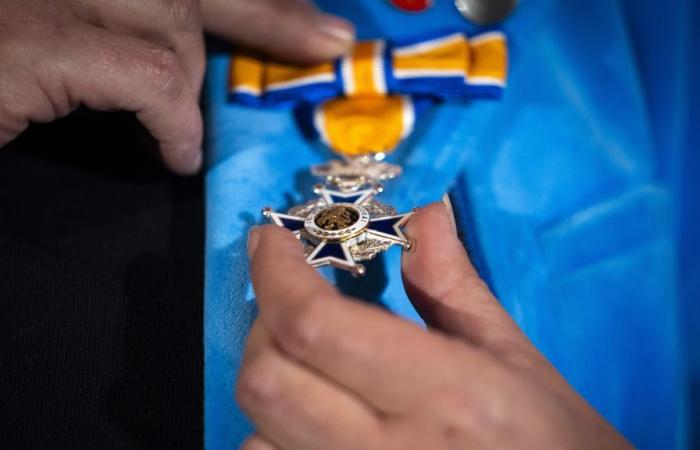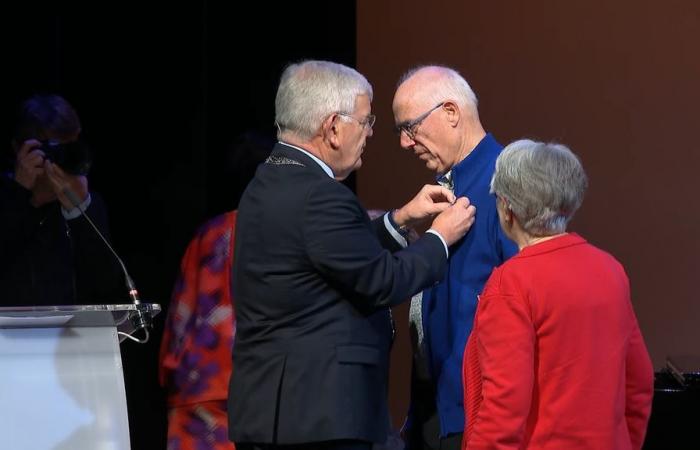NOS News•today, 8:18 PM
It has been a tradition for so long that even the Chancellery of the Dutch Orders does not know exactly when it started: the rain of ribbons. Today, thousands of people – 3,375 to be precise – once again received a royal award, traditionally on the day before King’s Day. Four questions about ribbons, and who is eligible for them and when.
How long have ribbons been awarded?
Since 1815, when King William I established the so-called decoration system, initially only the Military Order of William and the Order of the Netherlands Lion. These are two high knighthoods that are rarely awarded.
In 1892 the Order of Orange-Nassau was added, established by Queen Emma. By far the most people receive a royal honor in the latter order of knighthood, which has six degrees.
In 1994, the decoration system was drastically revised by the House of Representatives, mainly to create a clearer and more open system.
The Chancellery of the Dutch Orders, the official organization behind the approximately one hundred royal awards and medals in total, writes on its own website that the phenomenon of rain of ribbons probably came from abroad in the mid-nineteenth century, under King William II. In other countries, birthdays of heads of state or holidays have long been used to award awards. The king himself then presented the ribbons. Nowadays the mayor usually does that.
When is someone eligible for a royal award?
There is no age limit and there are no hard criteria, except that someone must have done “something special” for society, the Chancellery writes. Examples include people who have volunteered for at least fifteen years or people who do something extra for society through their work over a long period of time.
That person must then be nominated to the municipality by someone else. This is followed by a months-long vetting. For example, a municipal official first determines whether the person is even eligible for a nomination to the king. If that is the case, evidence and testimonials must be submitted that underline why the person deserves a royal honor. This will then be followed “behind the scenes” by an “extensive advice and decision procedure”.
The mayor, the King’s Commissioner and the so-called Chapter for Civil Orders, among others, play a role in this procedure, which issues a final advice. The minister then receives that advice, after which a decision on the nomination is made. If that decision is positive, the king puts his signature and the person is appointed to a knighthood. The entire process can take anywhere from six months to almost a year.
However, in 2015 the procedure turned out to be not completely watertight. A TV show presenter did it then Rambam to receive a ribbon via a list full of non-existent projects. The Chancellery subsequently filed a complaint against the program.
What exactly does someone get with a ribbon?
A box containing the award (a knight’s cross on a ribbon) and a badge. This badge can be worn every day, preferably only on smart clothing. A certificate and a brochure containing, among other things, the regulations for wearing the award will also be presented.
All royal decorations are made by silversmiths from the Royal Dutch Mint, the maker of Dutch coinage since 1567.
What happens to a ribbon after death?
Then he must be returned to the Chancellery of the Dutch Orders. Officially, the ribbon is the property of the State and is loaned to the recipient. However, surviving relatives have the option to keep the ribbon on loan for longer by paying a deposit. The wearer can also pay this deposit while alive. This concerns the amount it costs to make the ribbon. This usually concerns a distinction as Member in the Order of Orange-Nassau; it costs about 250 euros.
According to the Chancellery, there are “several reasons for returning the award, including the risk that the award will be offered as a commodity over time.” The certificate and badge do not need to be returned.
Many people proudly received their ribbon today, but the Frisian Piet de Haan refused:
3375 ribbons awarded, but not everyone wants one: ‘I am not participating in this’







